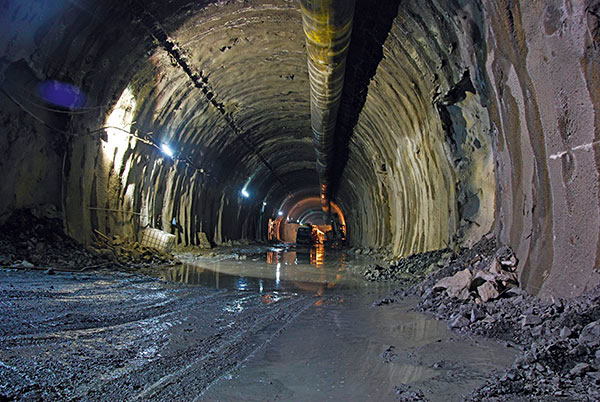
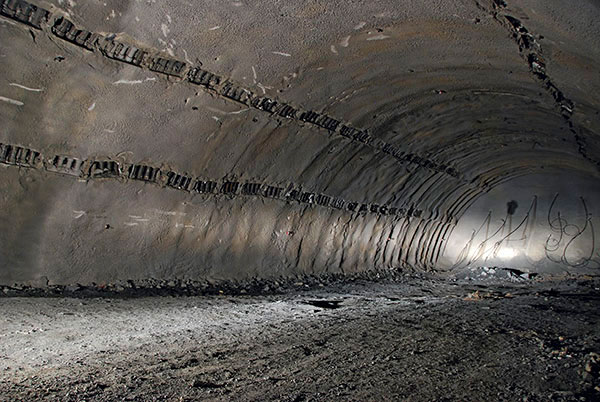
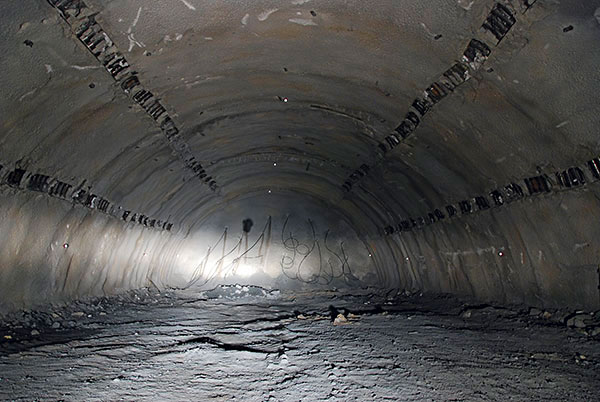
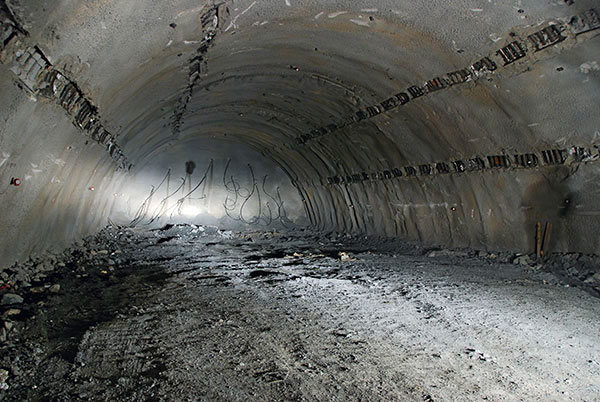
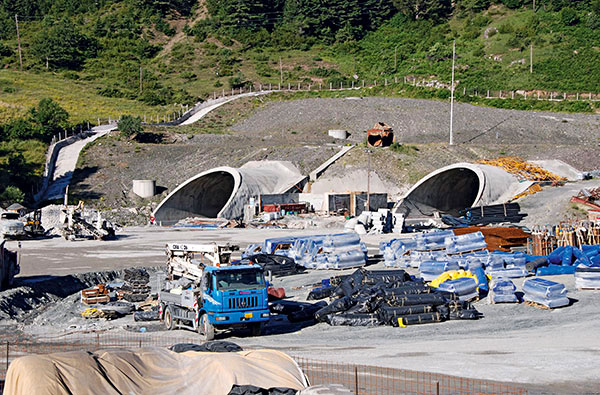
Innovative Rock Support System for Squeezing Rock Mass Conditions
The Metsovo Tunnel is located in the Pindus mountain range between the Epirus and West Macedonia administrative districts south of the village Metsovo. This tunnel is part of the A2 Egnatia Motorway (E90 according to the international E-road network), which is the east-west highway connection in Greece and one of the largest ongoing road construction projects in Europe.
As a priority project of the European Union, the 670km long Egnatia Motorway will enhance the transportation network between east (Greek- Turkish border) and west (Adriatic and Ionian Sea) as a modern complement to the ancient Roman Via Egnatia which linked Italy and Byzantium. Experts indicated that traveling times, compared to traffic on existing transportation links, should be cut in half. In addition, the economic development of Northern Greece should be significantly accelerated and the Epirus, Macedonia, and Thrace districts should be brought out of their infrastructural isolation. The total costs for the Egnatia Motorway are estimated to be in the range of 5 billion Euros.
In the course of building the 74 twin-tunnels of the Egnatia Motorway with a total length of 50km, accounting for approximately 7% of the overall highway length and 30% of the construction costs, difficult ground conditions had to be overcome for some of some tunnels. One of these tunnels is the second tube of the Metsovo Tunnel. The construction of the 3.5km long tunnel which started in 2006 were undertaken by Aktor S.A. using the principles of the New Austrian Tunneling Method (NATM). In this method, excavation is divided into different faces (top heading, bench, and if necessary invert) and is conducted by drilling and blasting or tunnel excavators.
The geological conditions at Metsovo can briefly be described as follows: in the western tunnel area, the ground consists of a wide thrust fault zone characterized by a heterogeneous composition of weak fault rocks; the eastern part mainly consists of magmatic rocks. As part of the primary lining, which stabilizes the rock mass temporarily after excavation, the following rock support is installed: shotcrete with steel reinforcement, lattice girders and steel arches, rock bolts, and in some critical sections AT-LSC-Elements (Lining Stress Controllers) as support for squeezing rock mass conditions. This unique and patent-registered support system was developed at the Institute for Rock Mechanics and Tunnelling, Graz University of Technology, Austria, and is distributed worldwide exclusively by DSI.
AT-LSC-Elements, which are installed in circumferential deformation gaps, divide the tunnel lining into longitudinal segments. Due to the elements’ well-defined load-deformation characteristics, large deformations which occur during excavation in unfavourable (e.g. squeezing) rock can be controlled. By doing so, overstressing of the lining is prevented and the load-bearing capacity of the support and duc tility of the tunnel lining is ensured. Another unique feature of AT-LSC-Elements is worth mentioning as well: the load-displacement behaviour (load line) is adjusted to project-specific demands, providing for a smooth initial load development and a constant final design load.
When construction is attempted under similar unfavourable ground conditions without using AT-LSC-Elements, severe overstraining of the tunnel lining can occur resulting in significantly higher construction costs. Today, planners and contractors make use of this optimized and reliable support system that has been successfully proven during construction of several tunnels in difficult ground conditions.
